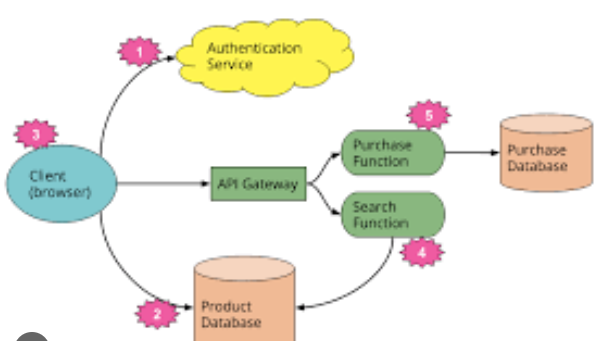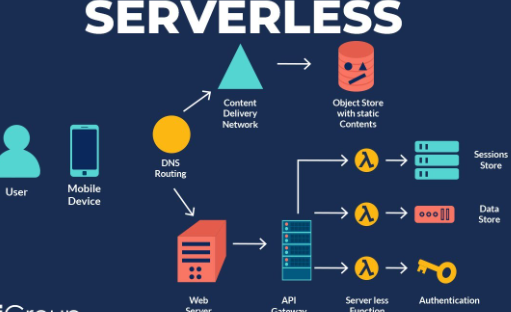Android Data Recovery

As organizations and their tech environments mature, they usually discover that managing their architectures is difficult. Serverless architecture allows companies to build and run their applications but not manage infrastructure. It allows you to take architecture-related responsibilities off your workload, which includes scaling, provisioning, and maintenance. Scaling can be automated, and you only pay for your required services. The latest option can be described as serverless. But what exactly is serverless? Is it the right choice for your web development companies in California?

What is serverless architecture?
Since introducing this new technology, we've seen significant growth in Amazon Web Services (AWS). A recent O'Reilly survey found that 40% of companies have adopted serverless technology. The primary reasons for using serverless are lower costs, scalability, developers' productivity, and many more.
Only some people are willing to embrace serverless fully. The study identified concerns over security, anxiety about being in the dark, and a lack of enough staff. The last point should be mentioned: even though serverless could be "easier," it still requires team-based expertise to become proficient in the new technology.
How does it compare to cloud-based services?
Cloud service providers host servers within data centers. They manage and maintain the servers via the cloud services provider. Cloud storage systems offer managed services that are accessible through an array of payment options. In addition, they can manage the scalability, configuration settings, and other processes through an admin self-service portal.
The cloud provider hosts companies who need them to manage an application platform infrastructure, test, or service.
Serverless computing is one of the types of cloud-based system computing. The serverless architecture eliminates the entire responsibility for maintenance of the server system and setting up scalability tracking and administration from the business and shifts it to an external service supplier. Serverless architecture companies focus more on the rapid development of software and the launch of web and mobile applications. Developer productivity is based on programming instead of managing servers, releases, and code deployments.
The development of applications is much easier when using serverless architecture. The development of applications requires more time in UX design, coding, and testing. The service provider handles the deployment of code and releases.
Is it time for you to shift towards serverless?
The process of transferring to a different structure takes work and effort. Start with an investment plan and financial strategy to fully understand the potential dangers and solutions for a successful migration. One method to speed up the migration process is to utilize microservices initially.
Microservices are utilized to minimize the degree of coupling between the flow paths of applications. The basic idea is that developers use microservices to replace server calls in the code. RESTful APIs are typically employed to process functions within an application only in the needed instances. Microservices aren't typically an element of a serverless architecture. However, they facilitate the ongoing transfer of existing software to a serverless platform without affecting application functionality.
Performance improvements for applications, reduced business costs, and increased developer productivity must be evaluated over time to ensure an achievable ROI. Serverless architecture offers a variety of business-building advantages that permit a Web Design Company of software to develop applications that are top-quality quick, flexible, and come with regular updates. The future is with those who can quickly develop high-quality, customer-centric software that meets customers' needs and generates revenues.
Benefits of Serverless Architecture
Let's explore the advantages of serverless technology.
Decomposing drives better observability
Serverless lets you break applications into smaller and smaller pieces, also known as decomposition. This way, you'll have better visibility across the entire application.
With smaller parts, the information needed to adjust or develop solutions is less.
Serverless is an event-based
Serverless is an event-based platform as opposed to a stream-based one. In an event-based system, each component of the application is separate. Events trigger each other. In a stream-based system event, there are connections between each service. If there's a malfunction, the impact is only on this particular event and not the whole log.
More efficient deployments, more flexibility, and increased technological advancement
Speed is often a key element in deciding to go with serverless architecture. It is possible to deploy applications in a matter of hours since there's no infrastructure building to burden you. Faster deployments also mean ease of scaling.
With this agile structure, you can be highly flexible with your releases. Since it's a faster process, you'll be able to speed up the pace of innovation.
These kinds of situations are happening worldwide in response to the outbreak. Organizations must change their priorities to meet new requirements, and it could be an internal issue with the shift to remote working. Another example is the introduction of apps designed to interact with customers, like those used by restaurants and retail stores.
Cost reduction for architecture
A serverless company is, in essence, outsourcing the management of databases and servers, and it is no longer accountable for the massive investments needed for the internal administration of architecture. Your use case, in the end, will determine how much you'll reduce.
Insights on UX
If your application has customers who are end users, they likely have high expectations about digital experiences. If architecture isn't an issue, you have more time to focus on customer experience (UX). Investing in your user interface isn't feasible, and serverless allows you to move resources around.
What are the disadvantages of serverless architecture?
Serverless architecture isn't 100% perfect. It's still a developing architecture; some must be ready to embrace it.
Inefficiencies in long-running applications
Running lengthy tasks can be more expensive on servers that are not server-based. Utilizing a dedicated server is usually more efficient.
A third-party dependency
Serverless technology will require you to depend on your service provider. You must be controlled entirely; any changes can affect your use without prior notice.
Cold begins
"Cold Start" or "cold start" is when a platform has to initiate internal resources. You can prevent a "cold begin" by ensuring the function is kept in active mode, which can be done by sending out requests regularly.

Conclusion
Thinking about a move into an AWS serverless platform? Do you need clarification on what you'll need or what you should do? SoftCircles, LLC a Web Design Company offers support and knowledge of using AWS's Amazon Web Services cloud and serverless architecture to give you the most business benefits. Since it is an Amazon Managed Services partner and Amazon Premier Partner, SoftCircles, LLC can help businesses make the most of the full range of AWS features, including serverless architecture management and implementation. Check out what other customers share in the case of studies at SoftCircles, LLC.




















